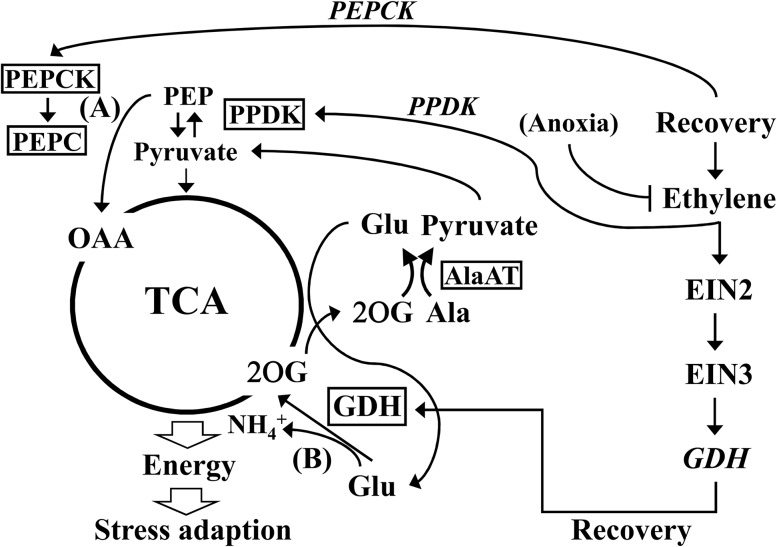Figure 9.
Model of tricarboxylic acid (TCA) cycle replenishment in response to reoxygenation. To rapidly recover energy generation, tricarboxylic acid cycle replenishment is proposed to be essential during reoxygenation. Two metabolic routes for tricarboxylic acid cycle replenishment are suggested in this model. One was performed by Phosphoenolpyruvate carboxylase (PEPC), which converts Phosphoenolpyruvate (PEP) into OAA (A), and the other one was performed by GDH, which converts Glu into 2OG (B). In addition, PYRUVATE PHOSPHATE DIKINASE (PPDK), an enzyme that converts pyruvate into PEP during glycogenesis, might play a role in providing PEP at the recovery stage. Transcripts of PPDK and GDH are regulated by ethylene signaling during A/R. Increased transcripts of GDH lead to the enhanced enzymatic reaction in the direction of deamination to regenerate 2OG. 2OG can further react with Ala and facilitate Ala breakdown by the enzyme AlaAT and produce Glu and pyruvate. Pyruvate further reenters the tricarboxylic acid cycle, and Glu can be recycled through the enzyme GDH again. PEPCK, PEP carboxylase kinase.

